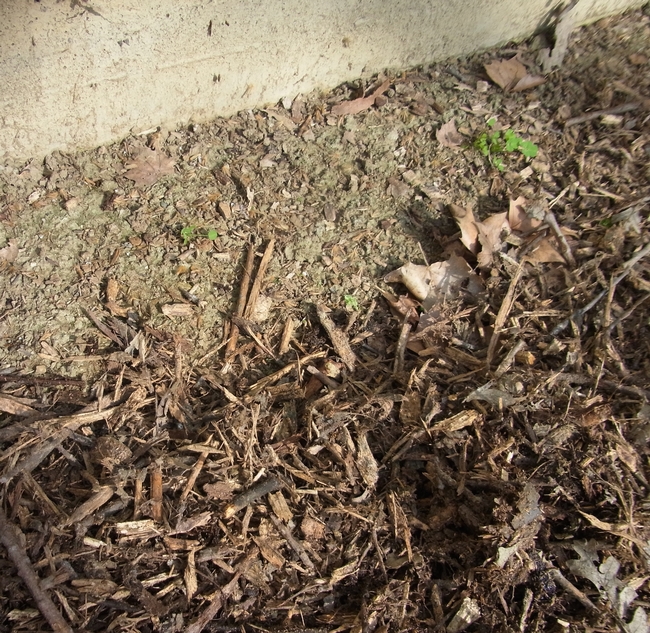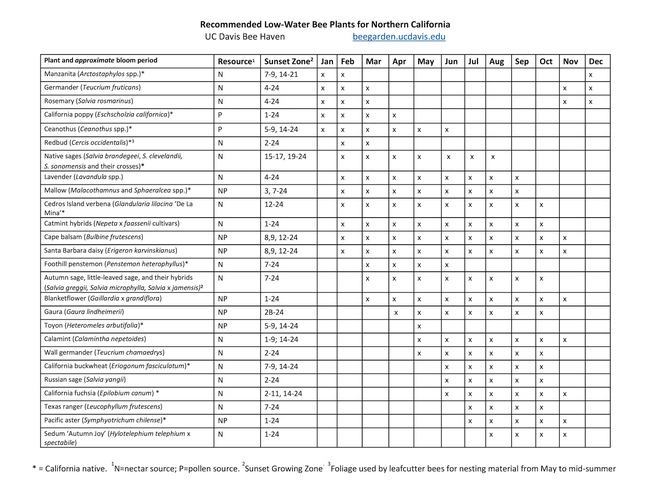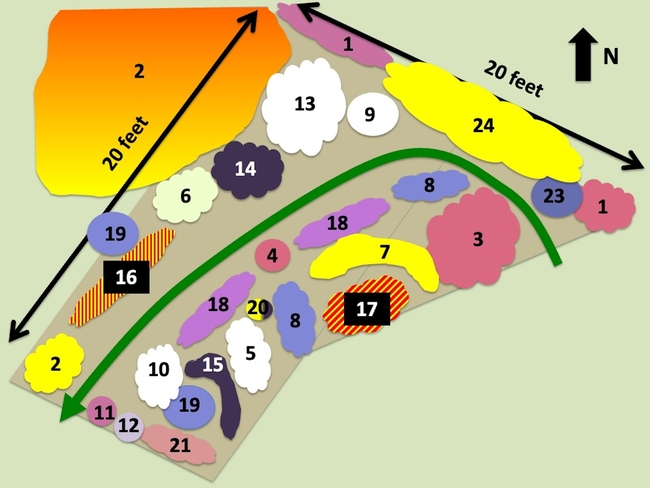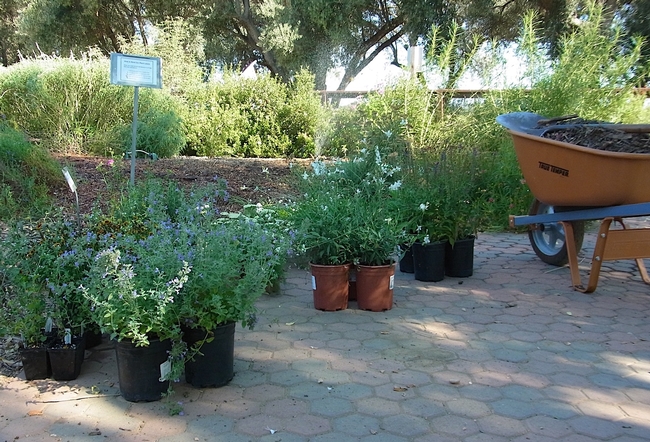A previous blog covered the steps to take before starting a bee garden. Now it's time to talk about the plants and how to take care of them.
Plant selection depends on many factors, including personal preference, climate, soil type, irrigation frequency, and plant availability. There are numerous bee plant lists available, some of questionable reliability (1). I recommend using a plant list from a reputable source like a university or cooperative extension website. Use national lists based on USDA planting zones carefully. USDA zones are based on average low temperature and place areas with vastly different rainfall and humidity in the same zone. For example, southern Florida and central California are in the same USDA zone; clearly Florida plants won't grow in dry California and visa-versa.
In California, a good starting point is the Haven's list of low-water bee plants shown below.
Once plants have been selected, it's time to place them for planting. Some gardeners like to plant from a plan like this one, while other prefer to 'wing it'. Plant numbers in this diagram refer to numbers on a planting list. I like to come up with a base plan and then alter it by moving plants around to their final position.
Dig a hole that's slightly wider than the root ball. If you're planting at time when it hasn't rained for at least a week, I suggest filling the hole with water and letting it drain before placing the plant. Refill the hole with the native soil after planting. Tamp down the soil, water, and mulch. The low-water plants widely used in California gardens should be planted slightly higher than the ground level to ensure good drainage. Water needs in a new garden will vary with the plants, site, soil, and weather. A general rule is to water daily the first 7 to 10 days, every other day for the next 7 to 10 days, and then weekly the rest of the summer.

It's also important to leave some bare soil for ground nesting bees. It doesn't have to be a large area; leaving a mulch-free area along a foundation, as shown here, is fine.
High insect diversity in the wild is seen at the edges where two different habitats meet, such as a forest and a meadow. Recreate this in your garden by placing your bee garden to run along the front of a shrub border. Grouping plants of the same species together also makes bee foraging more efficient. For more ideas about bee garden design drawn from research, see this previous post.
Bee garden maintenance comes down to one word: pruning. It's essential to deadhead as frequently as possible to ensure constant new flower growth. And in the winter, do hard pruning of semi-woody shrubs like sages: at the Haven we remove about 2/3 of the plant's growth. This stimulates lots of new shoots, which flower more than older wood.
References
1. Garbuzov, M. and F. Ratnieks. 2014. Listmania: The strengths and weaknesses of lists of garden plants to help pollinators. Bioscience 64: 1019-1026.
2. Majewska, A. and S. Altizer. 2018. Planting gardens to support insect pollinators. Conservation Biology 34(1): 15-25. PDF of this paper is here.


